
The Ajanta Caves are 30 rock-cut Buddhist cave monuments dating from the second century BCE to about 480 CE in Aurangabad district of Maharashtra state in India. Ajanta Caves are a UNESCO World Heritage Site. Universally regarded as masterpieces of Buddhist religious art, the caves include paintings and rock-cut sculptures described as among the finest surviving examples of ancient Indian art, particularly expressive paintings that present emotions through gesture, pose and form.

Sculpture is the branch of the visual arts that operates in three dimensions. Sculpture is the three-dimensional art work which is physically presented in the dimensions of height, width and depth. It is one of the plastic arts. Durable sculptural processes originally used carving and modelling, in stone, metal, ceramics, wood and other materials but, since Modernism, there has been almost complete freedom of materials and process. A wide variety of materials may be worked by removal such as carving, assembled by welding or modelling, or moulded or cast.

Chandigarh is a city and union territory in northern India, serving as the shared capital of the states of Punjab and Haryana. Situated near the foothills of the Himalayas, it borders Haryana to the east and Punjab in the remaining directions. Chandigarh constitutes the bulk of the Chandigarh Capital Region or Greater Chandigarh, which also includes the adjacent satellite cities of Panchkula in Haryana and Mohali in Punjab. It is located 260 km north of New Delhi and 229 km southeast of Amritsar.
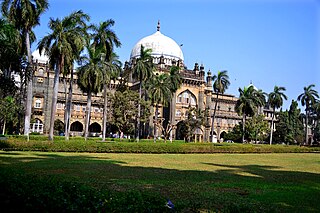
Chhatrapati Shivaji Maharaj Vastu Sangrahalaya, (CSMVS) formerly named the Prince of Wales Museum of Western India, is a museum in Mumbai (Bombay) which documents the history of India from prehistoric to modern times.

The Japanese dry garden or Japanese rock garden, often called a Zen garden, is a distinctive style of Japanese garden. It creates a miniature stylized landscape through carefully composed arrangements of rocks, water features, moss, pruned trees and bushes, and uses gravel or sand that is raked to represent ripples in water. Zen gardens are commonly found at temples or monasteries. A Zen garden is usually relatively small, surrounded by a wall or buildings, and is usually meant to be seen while seated from a single viewpoint outside the garden, such as the porch of the hojo, the residence of the chief monk of the temple or monastery. Many, with gravel rather than grass, are only stepped into for maintenance. Classical Zen gardens were created at temples of Zen Buddhism in Kyoto during the Muromachi period. They were intended to imitate the essence of nature, not its actual appearance, and to serve as an aid for meditation.

The Longmen Grottoes or Longmen Caves are some of the finest examples of Chinese Buddhist art. Housing tens of thousands of statues of Shakyamuni Buddha and his disciples, they are located 12 kilometres (7.5 mi) south of present-day Luoyang in Henan province, China. The images, many once painted, were carved as outside rock reliefs and inside artificial caves excavated from the limestone cliffs of the Xiangshan (香山) and Longmenshan, running east and west. The Yi River flows northward between them and the area used to be called Yique. The alternative name of "Dragon's Gate Grottoes" derives from the resemblance of the two hills that check the flow of the Yi River to the typical "Chinese gate towers" that once marked the entrance to Luoyang from the south. There are as many as 100,000 statues within the 2,345 caves, ranging from 1 inch (25 mm) to 57 feet (17 m) in height. The area also contains nearly 2,500 stelae and inscriptions, hence the name "Forest of Ancient Stelae", as well as over sixty Buddhist pagodas. Situated in a scenic natural environment, the caves were dug from a 1 kilometre (0.62 mi) stretch of cliff running along both banks of the river. 30% date from the Northern Wei and 60% from the Tang dynasty, caves from other periods accounting for less than 10% of the total. Starting with the Northern Wei dynasty in 493 AD, patrons and donors included emperors, Wu Zetian, members of the royal family, other rich families, generals, and religious groups.

Japanese gardens are traditional gardens whose designs are accompanied by Japanese aesthetics and philosophical ideas, avoid artificial ornamentation, and highlight the natural landscape. Plants and worn, aged materials are generally used by Japanese garden designers to suggest a natural landscape, and to express the fragility of existence as well as time's unstoppable advance. Ancient Japanese art inspired past garden designers. Water is an important feature of many gardens, as are rocks and often gravel. Despite there being many attractive Japanese flowering plants, herbaceous flowers generally play much less of a role in Japanese gardens than in the West, though seasonally flowering shrubs and trees are important, all the more dramatic because of the contrast with the usual predominant green. Evergreen plants are "the bones of the garden" in Japan. Though a natural-seeming appearance is the aim, Japanese gardeners often shape their plants, including trees, with great rigour.
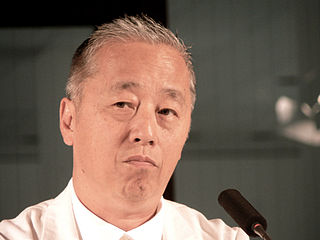
Hiroshi Sugimoto is a Japanese photographer and architect. He leads the Tokyo-based architectural firm New Material Research Laboratory.
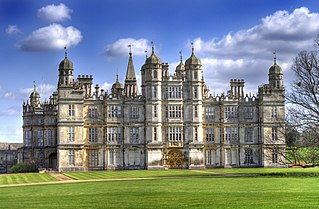
Burghley House is a grand sixteenth-century English country house near Stamford, Lincolnshire. It is a leading example of the Elizabethan prodigy house, built and still lived in by the Cecil family and is Grade I listed.

The history of Asian art includes a vast range of arts from various cultures, regions, and religions across the continent of Asia. The major regions of Asia include East, Southeast, South, Central, and West Asia.

Indian art consists of a variety of art forms, including painting, sculpture, pottery, and textile arts such as woven silk. Geographically, it spans the entire Indian subcontinent, including what is now India, Pakistan, Bangladesh, Sri Lanka, Nepal, Bhutan, and at times eastern Afghanistan. A strong sense of design is characteristic of Indian art and can be observed in its modern and traditional forms.

The Chinese Garden of Friendship is a heritage-listed 1.03-hectare (3-acre) Chinese garden at 1 Harbour Street, in the Sydney Central Business District, New South Wales, Australia. Modelled after the classic private gardens of the Ming dynasty, the garden offers an insight into Chinese heritage and culture. It was designed by Guangzhou Garden Planning & Building Design Institute, Tsang & Lee, and Edmond Bull & Corkery. It was built between 1986-1988 by Gutteridge Haskins & Davey, the Darling Harbour Authority, Imperial Gardens, Leightons, and Australian Native Landscapes. The gardens were added to the New South Wales State Heritage Register on 5 October 2018.

Buddhist art is visual art produced in the context of Buddhism. It includes depictions of Gautama Buddha and other Buddhas and bodhisattvas, notable Buddhist figures both historical and mythical, narrative scenes from their lives, mandalas, and physical objects associated with Buddhist practice, such as vajras, bells, stupas and Buddhist temple architecture. Buddhist art originated in the north of the Indian subcontinent, in modern India, Pakistan and Afghanistan, with the earliest survivals dating from a few centuries after the historical life of Siddhartha Gautama from the 6th to 5th century BCE.

Indian rock-cut architecture is more various and found in greater abundance in that country than any other form of rock-cut architecture around the world. Rock-cut architecture is the practice of creating a structure by carving it out of solid natural rock. Rock that is not part of the structure is removed until the only rock left makes up the architectural elements of the excavated interior. Indian rock-cut architecture is mostly religious in nature.
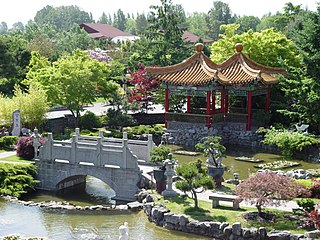
The International Buddhist Temple is located in Richmond, British Columbia, Canada. It is a Chinese Buddhist temple run by the International Buddhist Society.

Government Museum and Art Gallery, Chandigarh, is a public museum of North India having collections of Gandharan sculptures, sculptures from ancient and medieval India, Pahari and Rajasthani miniature paintings. It owes its existence to the partition of India. Prior to the partition, much of the collections of art objects, paintings and sculptures present here were housed in the Central Museum, Lahore, the then capital of Punjab. The museum has one of the largest collection of Gandharan artefacts in the world.

The visual arts are art forms such as painting, drawing, printmaking, sculpture, ceramics, photography, video, filmmaking, comics, design, crafts, and architecture. Many artistic disciplines, such as performing arts, conceptual art, and textile arts, also involve aspects of the visual arts, as well as arts of other types. Also included within the visual arts are the applied arts, such as industrial design, graphic design, fashion design, interior design, and decorative art.

Ridi Viharaya or Silver Temple is a 2nd-century BCE Theravada Buddhist temple in the village of Ridigama, Sri Lanka. Built during the reign of Dutthagamani of Anuradhapura, the temple is considered as the place where the silver ore, which provided silver to complete Ruwanwelisaya; one of the largest stupa in Sri Lanka, was discovered. According to the chronicles Mahavamsa and Thupavamsa, the Ridi Viharaya complex was built in gratitude for helping him cherish his dream of completing Ruwanwelisaya.
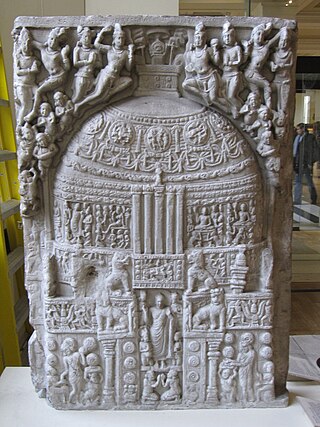
Amarāvati Stupa is a ruined Buddhist stūpa at the village of Amaravathi, Palnadu district, Andhra Pradesh, India, probably built in phases between the third century BCE and about 250 CE. It was enlarged and new sculptures replaced the earlier ones, beginning in about 50 CE. The site is under the protection of the Archaeological Survey of India, and includes the stūpa itself and the Archaeological Museum.

Art of Myanmar refers to visual art created in Myanmar (Burma). Ancient Burmese art was influenced by India and China, and was often religious in nature, ranging from Hindu sculptures in the Thaton Kingdom to Theravada Buddhist images in the Sri Ksetra Kingdom. The Bagan period saw significant developments in many art forms from wall paintings and sculptures to stucco and wood carving. After a dearth of surviving art between the 14th and 16th century, artists created paintings and sculptures that reflect the Burmese culture. Burmese artists have been subjected to government interference and censorship, hindering the development of art in Myanmar. Burmese art reflects the central Buddhist elements including the mudra, Jataka tales, the pagoda, and Bodhisattva.







































